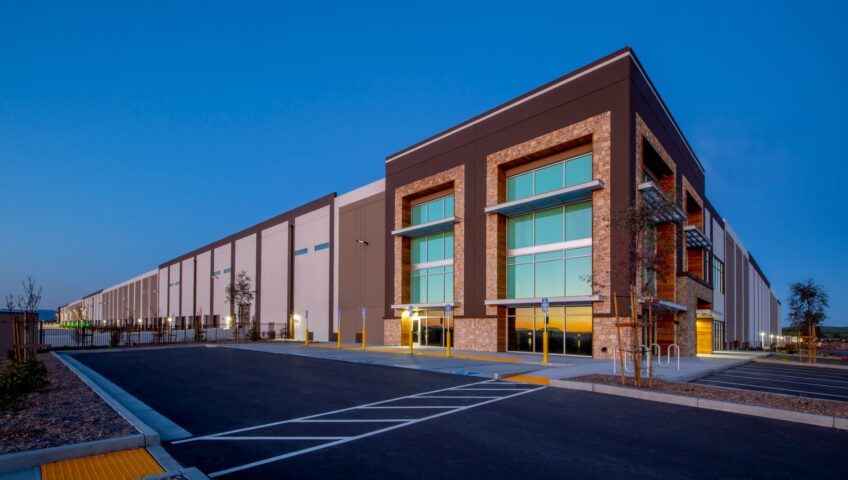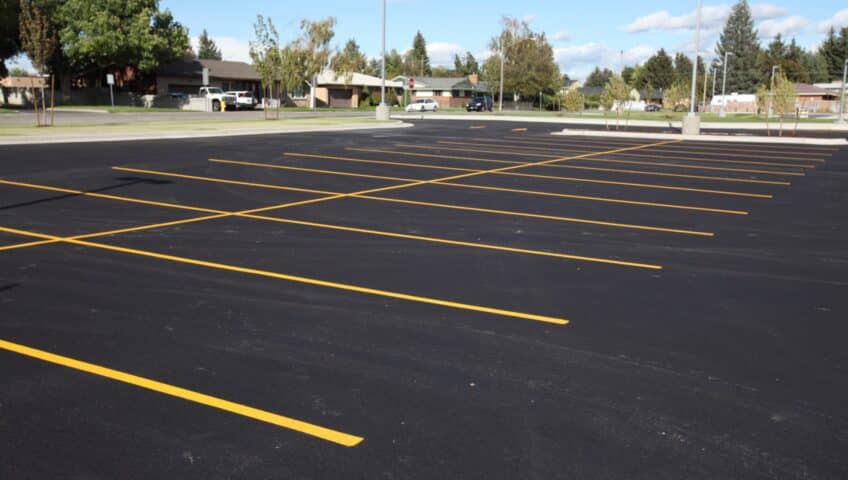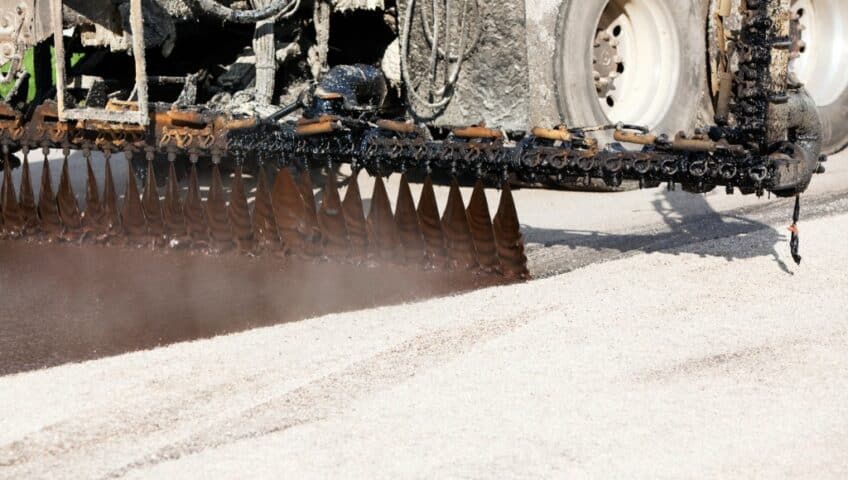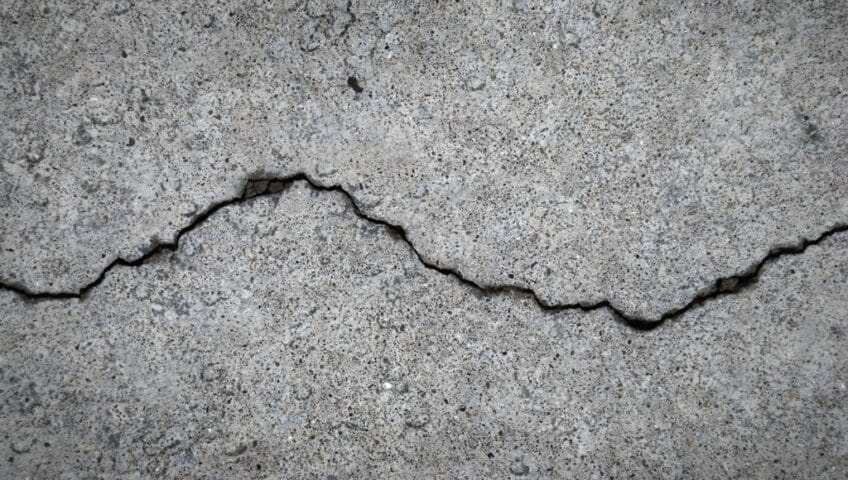
What’s the Difference Between Asphalt Paving and Slurry Seal?
As a property owner or manager, you understand the importance of keeping hard surfaces like driveways, parking lots, and roadways in good condition. Asphalt paving is usually preferable to concrete because it is more versatile and durable, but you should also consider sealing options like slurry sealing. Here’s what you need to know about the difference between asphalt paving and slurry sealing.
What Is Asphalt Paving?
Asphalt is just about everywhere you look. It’s on our roads, driveways, parking lots, and more. But what is it? Asphalt pavement is made up of sand, stone (aggregate), liquid asphalt (petroleum), and additives. Another common term for asphalt is “bitumen.”
Benefits of Asphalt Paving
Asphalt paving provides a number of advantages to businesses and consumers. Here are some of the top benefits of using asphalt pavement.
1. Durable and Long-Lasting
An asphalt road or driveway installation done by an experienced installer is durable and long-lasting. With regular care and maintenance, asphalt can last decades.
2. Cost-Efficient
Asphalt is considered one of the most cost-efficient paving options. Compared to concrete, it generally costs less to install and maintain. However, this can vary depending on the current price of crude oil, which is one of the mix’s main components.
3. Good for Noise Reduction
In some areas, you want a quiet surface. Asphalt delivers this because its materials absorb road noise.
4. 100% Recyclable
Asphalt is the world’s most recycled product. According to the National Asphalt Pavement Alliance (NAPA), reclaimed asphalt pavement mixtures saved 2.6 million metric tons of the product in 2021 alone.
5. Fast Project Completion
Because the material required to make asphalt is easy to acquire, you can be assured that your project will be completed quickly.
6. Good Water Drainage
Asphalt is an excellent surface for water drainage. Specifically, porous asphalt allows liquid to pass through the surface to its base so that it goes back into the ground. There are other types of asphalt that are meant to redirect water instead of absorb it.
7. Safety Aspects
Asphalt can make a surface much safer. Because the material has water-managing qualities, it helps in reducing skidding on the asphalt’s surface. Also, the asphalt’s dark color helps melt snow and ice to make the surface safer for both pedestrians and vehicles.
The Asphalt Paving Process
There is a lot of surface preparation necessary before asphalt is applied. Proper excavation, cleaning, and ground compaction are necessary to get the best possible results. Once this is done, the materials can be mixed on-site.
To create asphalt, a mixture of roughly 90-95% sand and aggregate is combined with 5-10% bitumen and asphalt (petroleum). The high viscosity of the material is what binds everything together.
The asphalt is laid using a special paver and then compacted using rollers. Once this step is complete, the surface is left to solidify for a minimum of 24 hours before it can be used. Over time, however, asphalt will begin to degrade. This is why slurry sealing is a popular option to extend the life of the surface.
What Is Slurry Sealing?
Slurry sealing is the application of a mixture of water, aggregate (small crushed rock), asphalt emulsion, and additives to an existing asphalt surface. This mixture is applied to help protect and preserve the underlying structure, such as a driving surface.
Slurry seals can be applied directly after the initial installation of the original surface or a period after. To apply the sale, the mixture is created and applied using a specialty truck with compartments that hold the emulsion, additives, and aggregate. As the materials flow out of the truck, workers will assist in spreading the mixture.
How Slurry Sealing Is Different from Asphalt Paving
Slurry sealing can’t replace asphalt paving. It’s also commonly confused with seal coating, which isn’t the same thing. A slurry seal is a sealing treatment that goes on top of your asphalt paving. Unlike seal coating, which has a smooth finish, slurry sealing has a rough texture to provide your asphalt with an additional wear surface. Without the slurry sealing, you only have the asphalt as your surface material.
The Importance of Doing Slurry Sealing
Asphalt is made of a petroleum-derived binder and a mineral aggregate. When it’s hot, the binder is semi-fluid, which allows the asphalt to be poured and spread. Then, it solidifies as it cools. However, asphalt can lose its integrity over time due to environmental exposure.
The binder becomes brittle and hard due to chemical reactions caused by UV rays and oxidation. Over time, the asphalt binder will shrink and become less resilient against water damage and stress, making it susceptible to cracking from traffic and heavy loads.
Slurry sealing is one of the top methods for protecting your asphalt from this deterioration. Even if your asphalt already has a few cracks, slurry sealing is a great approach to filling them in and protecting your entire surface long-term. Some of the top benefits of using slurry sealing for your asphalt include the following.
- Corrects and Prevents Problems — A slurry seal application can correct various existing problems like surface cracking, loss of matrix, raveling, lack of friction, and increased air and water permeability. Slurry sealing also prevents issues by creating a waterproof surface that is more skid-resistant.
- Aesthetically Pleasing — After just one application, you’ll notice a difference in the way your asphalt appears. Basically, a slurry seal gives the surface a more uniform texture and color, which can increase property values or benefit a business due to increased curb appeal.
- Cost-Effective — Slurry seal is affordable to install and a cost-effective option to extend the life of your asphalt. Its effects can last up to 10 years. It also uses recycled materials and requires minimal labor for the installation.
Contact South Central Sealing & Paving for All Your Kansas Asphalt Needs
Kansas businesses trust South Central Sealing & Paving for their asphalt needs. Whether you require new installation or asphalt repair or sealing services, our team is standing by to take on your project. With more than 30 years of industry experience, we are confident in our knowledge and ability to take on any size of project. Contact us today with any questions or to get a free estimate!






Recent Comments